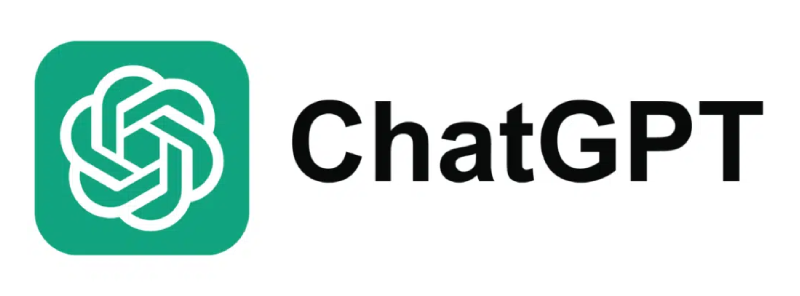Key takeaways
- Signature forgery is a widespread issue: in 2023 alone, global check fraud losses hit $26.6 billion, and document forgeries increased by 244% year-ever-year in 2025.
- Forgers use various techniques - from free-hand simulation and digital copy-paste to AI-generated signatures
- Prevention is better than cure: the most effective method for protecting yourself from signature fraud is to use Docupilot and safeguard your documents with secure digital signatures
According to Nasdaq’s Global Financial Crime Report, global losses from check fraud amounted to $26.6 billion in 2023, with the Americas accounting for 80% of these losses.
Further, according to Entrust's 2025 Identity Fraud Report, digital document forgeries rose by 244% year-over-year. This guide will cover types of signature forgeries, methods used by forgers, and ways to detect them. We also look at forged signature penalty and how you can protect your business with secure digital signatures.
What is Signature Forgery?
Signature forgery is the act of imitating someone’s signature without their authorization. Its purpose is to deceive with the intention of committing fraud, identity theft, or other illegal activities.
Both paper-based wet signatures and electronic signatures can be forged.
For the victim, forgery can lead to financial, legal, and reputational losses. For the perpetrator, the penalty for forging a signature can include criminal charges, fines, and imprisonment.
Real-world examples of signature forgery
Interestingly, signature forgery has a long history that predates even the widespread use of paper. However, the problem is much more severe today. Technological advancements have enabled sophisticated methods of forgery that can evade your detection. This increases the risk for individuals and businesses alike.
Here are a few examples that illustrate forge signature meaning and consequences in the modern world:
Wells Fargo fake accounts scandal
The Wells Fargo fake accounts scandal from 2016 was a notable case, when it was revealed that bank employees had created millions of fake accounts between 2002 and 2016 to meet sales targets.
Employees of the bank used customer identities without authorization, created fake accounts, and enrolled customers in products and services without consent.
The scandal led to investigations by multiple bodies at the federal and state level. The bank admitted to misusing customers’ personal information, harming their credit ratings, and collecting millions of dollars in fees and interest.
Wells Fargo paid $3 billion to resolve the investigations, and criminal charges were filed against several top executives. The bank’s reputation took a serious hit, and it continues to grapple with the consequences of its unethical actions.
AOG Technics engine parts fraud
In 2023, AOG Technics, a UK-based engine parts distributor, was charged with falsifying documentation related to the sale of engine parts.
TAP Air Portugal was the first operator to raise concerns about parts supplied by the company, after discovering that supposedly new engine parts were in fact significantly worn out.
A large number of aircraft that used parts supplied by AOG Technics were grounded as national and regional aviation industry regulators worked to understand the scale of the problem.
Several arrests were made in Portugal. A director of AOG Technics was charged with fraudulent trading practices and is due to appear in court June 2025.
Business Consequences of Signature Forgery
Forgery can lead to severe and wide-ranging consequences for businesses:
- Financial losses: The potential for financial losses is huge, and can accrue from legal fees, litigation costs, damaged business relationships, and contract termination
- Criminal charges: Intentional signature forgery by a company or its employees can lead to criminal charges against the company, probation or imprisonment for individuals, and heavy fines
- Reputation damage: Allegations or proven incidents of forgery can lead to loss of trust from clients, investors, and partners, negative media exposure, and reduction in company valuation
- Legal and regulatory consequences: Forgery can trigger investigations or sanctions, leading to fines and penalties, audits or oversight, and loss of licenses or certifications
- Operational disruption: Dealing with forgery and its consequences can disrupt business operations as companies divert resources from core activities
Common Types of Forged Signatures
Forgers can use several methods to replicate signatures in the physical and digital realms.
Types of wet signature forgery
Common methods used for wet signature replication include the following:
- Free-hand simulation: The forger has knowledge of the original signature, studies it, and relies solely on their writing skills to create a replica. As it does not involve the use of any tool, this is the most difficult method to master and can require significant time and practice
- Traced forgery: The forger replicates a signature by first tracing it with tracing paper, then placing carbon paper under the tracing paper and writing over the trace to create a replica on the target document
- Blind simulation: Forgers use this method when they don’t have access to the original signature, only relying on knowledge of an individual’s name to create a signature they hope will be convincing enough to pass casual scrutiny
- Skilled forgery: Used by highly skilled forgers who combine knowledge and experience of writing and signature styles and techniques, human psychology, and significant practice to forge signatures that are extremely hard to identify as fake
Types of electronic signature forgery
A variety of tools and methods are also available to signature forgers operating in the digital domain:
- Image copy and paste: One of the simplest methods, where anyone with access to a legitimate signature can scan it, remove the background with image-editing software, copy the image, and finally paste it into a target document
- Signature apps: Smartphone apps developed to help individuals create electronic signatures from handwritten ones can be used by forgers to create unauthorized replicas
- Unauthorized use of e-signature platforms: Hackers or cybercriminals can steal a legitimate user’s credentials to access e-signature platforms and sign documents
- AI-generated signatures: Malicious actors can train AI on a target’s handwriting and signature to create near-exact replicas
How to Detect a Forged Signature
Many types of documents, including checks, contracts, and wills, are particularly susceptible to signature fraud. The best way to prevent forgery is to have proper document controls in place.
There are several methods available if you suspect signature forgery has taken place despite the presence of controls.
Detecting forged wet signatures
Methods for detecting forged wet signatures include the following:
- Handwriting analysis: A natural flow, smooth pen movements, and variation in line thickness are well-known characteristics of genuine signatures. Forensic examiners look for deviations from these characteristics and other indicators when examining suspected forgeries
- Signature comparison: A side-by-side comparison of an authentic and suspected signature can help with detection. Common indicators of forgery include differences in slant, individual letter forms, and letter size
- Forensic tools: Magnification with microscopes can identify signs of tracing, ink pooling, and abrupt pen movements. Chemical analysis of ink and paper can identify differences in ink composition, paper and ink age, and printing method
Detecting forged digital signatures
Digital signatures are more secure than handwritten signatures. They offer a higher level of protection against forgery, as the signature fingerprint includes multiple identifiers, such as the email address, device IP address, and a digital certificate issued by a certificate authority.
Despite the presence of multiple identifiers, digital signature forgery does occur, and you can use the following methods to detect it:
- Metadata and audit trails: You can check document properties, including timestamps for document creation and modification, signer IP address and location, and logs generated by platforms used for document signing
- Cryptographic signature validation: Signature software can be used to validate the digital certificate and check for unauthorized document modification after signing
- Third-party verification services: Several e-signature platforms provide tools for digital signature verification. These tools check validity of the digital certificate used to sign the document, verify the signer's identity, and confirm that the document has not been altered without proper authorization
Steps to Take If You Suspect a Forged Signature
If you suspect signature forgery, you must take steps to minimize its impact and protect your business and customers from legal and financial repercussions.
Sustainable businesses operate according to established processes and procedures.
Therefore, rather than taking a reactive approach, it is better first to establish and follow documented steps for dealing with signature forgery if such an incident occurs.
A key step is to notify affected parties so that they can take steps to minimize potential damage.
Escalate your suspicions internally to relevant departments, including legal, IT, and compliance, so that essential controls are put in place to prevent such events in the future.
You can also engage forensic experts to verify your suspicions and contact legal counsel to help you deal with the potential legal fallout.
Preserving evidence, including logs, emails, and file copies, is also important. This will help assist the investigation later on and improve forgery prevention processes.
How Docupilot Helps Prevent Signature Forgery
Docupilot is a full-featured and affordable document automation platform for businesses of every size. It offers:
- Fully customizable templates
- Basic and advanced conditionals
- Bulk document creation
- Multi-user collaboration
- Integrations with 70+ third-party apps
- API access
- Digital signatures
- And more
Docupilot helps mitigate the risk of signature forgery by using secure electronic signature technology, complete with authentication, audit trails, and tamper-proof records.
Each signed document captures metadata, including signer identity, IP address, timestamp, and device details, making it extremely difficult to forge or alter without detection.
These digital safeguards not only deter fraudulent behavior but also provide verifiable proof if disputes arise.
By automating the signature process in a controlled, trackable environment, Docupilot enhances document integrity and legal defensibility.
Docupilot’s e-signature module complies with ESIGN and UETA regulations. Depending on your technology stack, you can even use integrations with DocuSign, SignNow, or HelloSign for secure, forgery-resistant document signing.
Final Thoughts
Criminals and malicious actors may use signature forgery to create fake business documents, leading to financial losses, reputation damage, legal and regulatory repercussions, and disrupting your operations.
Digital signatures with Docupilot can mitigate the risk of forgery and protect your business and customers from its consequences.
Use our 30-day trial and gain firsthand experience by putting Docupilot through its paces.
Sign up today and start creating secure digital documents for your business.


















